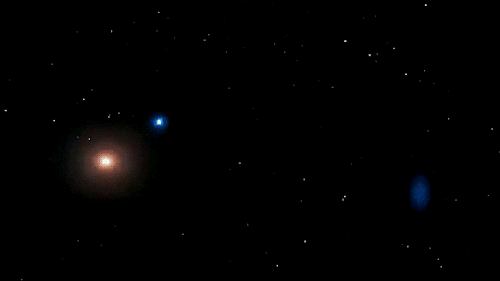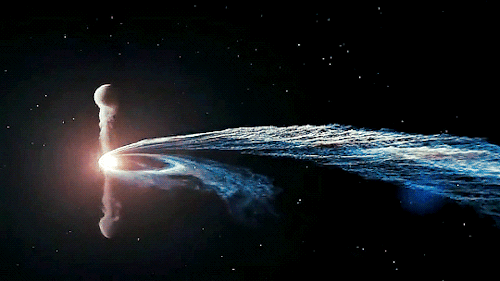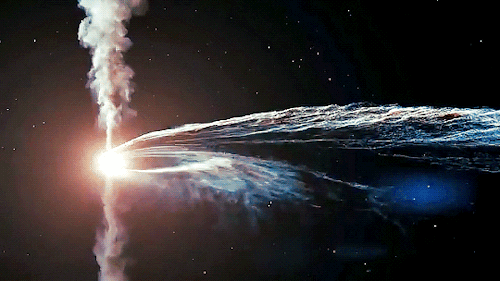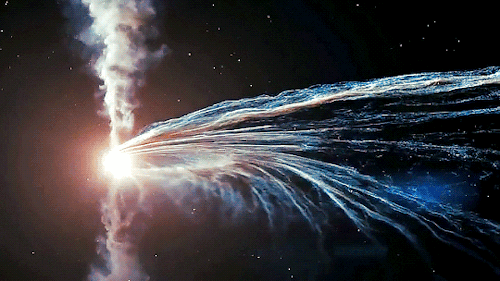From The Invention Of Wireless To Radio Broadcast To Space
From the invention of wireless to Radio Broadcast to Space

The word radio was coined in 1907 after a decade of furious activity to discover the mechanism for wireless transmission. A decade earlier, French physicist Édouard Branly coined the term radioconductor to describe a means of wireless transmission. He based his term on the verb radiate which ultimately came from the Latin word radius meaning the spoke of a wheel, a ray or beam of light. The word radio was first used by itself in a 1907 article by Lee De Forest. It was used five years later by the Navy to distinguish it from other wireless technologies and entered common usage in the next decade. Radio technology advanced so quickly that a little over 50 years later on November 16, 1974, scientists broadcast the first interstellar radio message out to the stars, a program that later became known as METI, the Message to Extra-terrestrial Intelligence. To date, only 9 messages have been transmitted by a variety of organizations:
{The Morse Message (1962)}
Arecibo message (1974)
Cosmic Call 1 (1999)
Teen Age Message (2001)
Cosmic Call 2 (2003)
Across the Universe (2008)
A Message From Earth (2008)
Hello From Earth (2009)
RuBisCo Stars (2009)
Wow! Reply (2012)
The first radio message, known as the Morse Message, does not technically belong on this list as the Russians directed the message to Venus, and thus the primary mission was not Interstellar. The message targets vary in distance from the very short (the majority of targets are under 100 light years away) to the very far, including the Arecibo Message, which targets the M13 globular cluster 24,000 light years away.

While there have been some dissenting voices who argue that ‘revealing’ our location to enemy or hostile alien civilizations is ill-advised at best, most scientific consensus agrees that due to the physical restrictions on speed and travel (as currently understood) we are in no danger of imminent attack. While the Arecibo Message won’t reach its target for another 25,000 years or so, the first of the other messages should arrive by 2029. Other scientist point out that our current terrestrial radio and television broadcasts represent their own METI signal and thus we have no need to fund additional broad- or narrow-cast messages.
Image of the Arecibo Radio Telescope courtesy Marius Strom under a Creative Commons 3.0 share alike license.
Image of the Arecibo Message of 1679 bits in the public domain.
More Posts from Starry-shores and Others

Comet meets cluster by europeanspaceagency


I am so grateful that this thing is fucking extinct.
I would never have been able to tolerate having the job of creating this 3D model.
THIS IS WHAT MY WORST NIGHTMARE LOOKS LIKE.







Greetings to the Universe in 55 Different Languages
Dr. Carl Sagan chaired the committee that organized and produced the Voyager Space Probe’s golden record. Among the contents were Sounds of Earth, a selection of sound bytes including nature, civilization, and humanity, and Greetings to the Universe in 55 Different Languages.
Every person who recorded for this project was given almost total freedom on what to say. They were explained the purpose of the project and asked to keep it brief. These are the genuine responses of each person sending a message to extraterrestrial life somewhere in the stars.


The Titanoboa, is a 48ft long snake dating from around 60-58million years ago. It had a rib cage 2ft wide, allowing it to eat whole crocodiles, and surrounding the ribcage were muscles so powerful that it could crush a rhino. Titanoboa was so big it couldn’t even spend long amounts of time on land, because the force of gravity acting on it would cause it to suffocate under its own weight.
The Kepler space telescope has shown us our galaxy is teeming with planets — and other surprises

The Kepler space telescope has taught us there are so many planets out there, they outnumber even the stars. Here is a sample of these wondrous, weird and unexpected worlds (and other spectacular objects in space) that Kepler has spotted with its “eye” opened to the heavens.
Kepler has found that double sunsets really do exist.

Yes, Star Wars fans, the double sunset on Tatooine could really exist. Kepler discovered the first known planet around a double-star system, though Kepler-16b is probably a gas giant without a solid surface.
Kepler has gotten us closer to finding planets like Earth.

Nope. Kepler hasn’t found Earth 2.0, and that wasn’t the job it set out to do. But in its survey of hundreds of thousands of stars, Kepler found planets near in size to Earth orbiting at a distance where liquid water could pool on the surface. One of them, Kepler-62f, is about 40 percent bigger than Earth and is likely rocky. Is there life on any of them? We still have a lot more to learn.
This sizzling world is so hot iron would melt!

One of Kepler’s early discoveries was the small, scorched world of Kepler-10b. With a year that lasts less than an Earth day and density high enough to imply it’s probably made of iron and rock, this “lava world” gave us the first solid evidence of a rocky planet outside our solar system.
If it’s not an alien megastructure, what is this oddly fluctuating star?

When Kepler detected the oddly fluctuating light from “Tabby’s Star,” the internet lit up with speculation of an alien megastructure. Astronomers have concluded it’s probably an orbiting dust cloud.
Kepler caught this dead star cannibalizing its planet.

What happens when a solar system dies? Kepler discovered a white dwarf, the compact corpse of a star in the process of vaporizing a planet.
These Kepler planets are more than twice the age of our Sun!

The five small planets in Kepler-444 were born 11 billion years ago when our galaxy was in its youth. Imagine what these ancient planets look like after all that time?
Kepler found a supernova exploding at breakneck speed.

This premier planet hunter has also been watching stars explode. Kepler recorded a sped-up version of a supernova called a “fast-evolving luminescent transit” that reached its peak brightness at breakneck speed. It was caused by a star spewing out a dense shell of gas that lit up when hit with the shockwave from the blast.
* All images are artist illustrations.
Make sure to follow us on Tumblr for your regular dose of space: http://nasa.tumblr.com
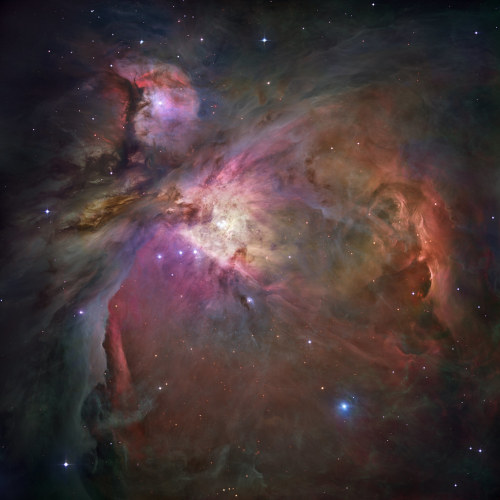
M42 by NASA Hubble

-
 starry-shores reblogged this · 5 years ago
starry-shores reblogged this · 5 years ago -
 an-abyss-called-life liked this · 5 years ago
an-abyss-called-life liked this · 5 years ago -
 somewherelostamonglilypads liked this · 5 years ago
somewherelostamonglilypads liked this · 5 years ago -
 geobusiness liked this · 11 years ago
geobusiness liked this · 11 years ago -
 orafidiya reblogged this · 11 years ago
orafidiya reblogged this · 11 years ago -
 arulprakash47 reblogged this · 11 years ago
arulprakash47 reblogged this · 11 years ago -
 celegansaregay reblogged this · 11 years ago
celegansaregay reblogged this · 11 years ago -
 the-cunning-linguist-blog liked this · 11 years ago
the-cunning-linguist-blog liked this · 11 years ago -
 sassycandi liked this · 11 years ago
sassycandi liked this · 11 years ago -
 arulprakash47 reblogged this · 11 years ago
arulprakash47 reblogged this · 11 years ago -
 myjunebug5 liked this · 11 years ago
myjunebug5 liked this · 11 years ago -
 shokrahdubstep liked this · 11 years ago
shokrahdubstep liked this · 11 years ago -
 diabolicalillumination liked this · 11 years ago
diabolicalillumination liked this · 11 years ago -
 yossrashmmari liked this · 11 years ago
yossrashmmari liked this · 11 years ago -
 5five5five5 liked this · 11 years ago
5five5five5 liked this · 11 years ago -
 betelgeusetnm liked this · 11 years ago
betelgeusetnm liked this · 11 years ago -
 matthewsaccaro liked this · 11 years ago
matthewsaccaro liked this · 11 years ago -
 italianofthenorth liked this · 11 years ago
italianofthenorth liked this · 11 years ago -
 maximaxoo liked this · 11 years ago
maximaxoo liked this · 11 years ago -
 suryel liked this · 11 years ago
suryel liked this · 11 years ago -
 bronx2216 reblogged this · 11 years ago
bronx2216 reblogged this · 11 years ago -
 antihumanistnihilistcockroaches reblogged this · 11 years ago
antihumanistnihilistcockroaches reblogged this · 11 years ago -
 antihumanistnihilistcockroaches liked this · 11 years ago
antihumanistnihilistcockroaches liked this · 11 years ago -
 awkwardscotty reblogged this · 11 years ago
awkwardscotty reblogged this · 11 years ago -
 awkwardscotty liked this · 11 years ago
awkwardscotty liked this · 11 years ago -
 neverknwsbest liked this · 11 years ago
neverknwsbest liked this · 11 years ago -
 sovietproblems reblogged this · 11 years ago
sovietproblems reblogged this · 11 years ago -
 kammartinez reblogged this · 11 years ago
kammartinez reblogged this · 11 years ago -
 sagansense reblogged this · 11 years ago
sagansense reblogged this · 11 years ago -
 arctic-satellite-blog liked this · 11 years ago
arctic-satellite-blog liked this · 11 years ago -
 ramachandranramasamy reblogged this · 11 years ago
ramachandranramasamy reblogged this · 11 years ago -
 rainbluelove-blog-blog liked this · 11 years ago
rainbluelove-blog-blog liked this · 11 years ago -
 sarashanti liked this · 11 years ago
sarashanti liked this · 11 years ago -
 hackedgrammar reblogged this · 11 years ago
hackedgrammar reblogged this · 11 years ago -
 beefmachine reblogged this · 11 years ago
beefmachine reblogged this · 11 years ago -
 beefmachine liked this · 11 years ago
beefmachine liked this · 11 years ago -
 beansonmyjeans reblogged this · 11 years ago
beansonmyjeans reblogged this · 11 years ago -
 romkids liked this · 11 years ago
romkids liked this · 11 years ago -
 fartdeluxeatgmaildotcom-blog reblogged this · 11 years ago
fartdeluxeatgmaildotcom-blog reblogged this · 11 years ago

Amateur astronomer, owns a telescope. This is a side blog to satiate my science-y cravings! I haven't yet mustered the courage to put up my personal astro-stuff here. Main blog : @an-abyss-called-life
212 posts


